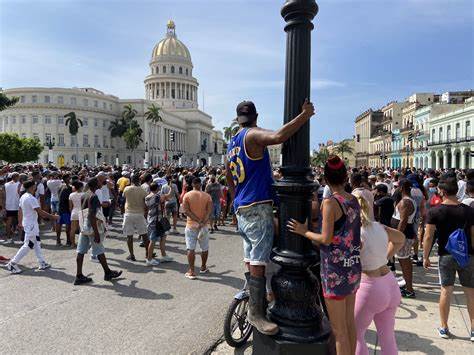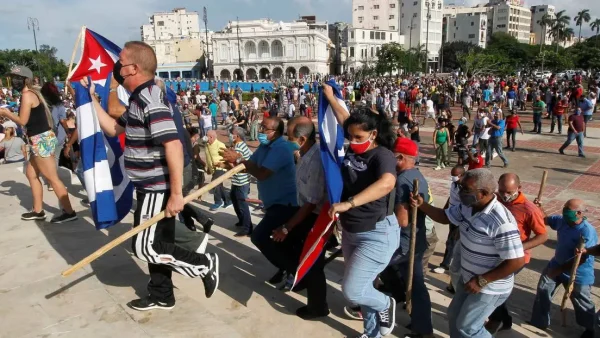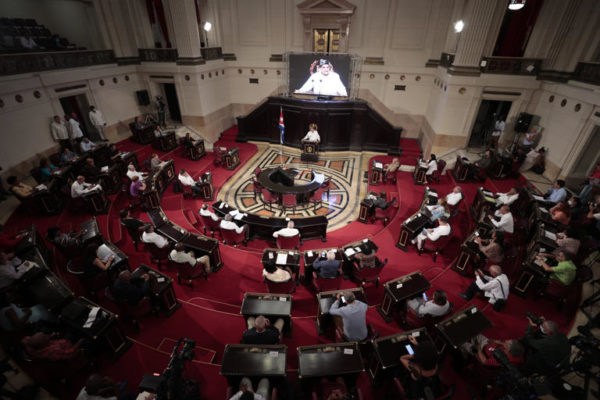Amnesty for Cuba’s Political Prisoners from July 11, 2021
By Javier Herrera
HAVANA TIMES – With the 1954 elections, the regime of Fulgencio Batista, made an effort to give itself an apparent democratic legality. After several pardons to opponents, he announced an amnesty for the hundreds of political prisoners imprisoned in Cuban jails, but the list of possible releases excluded Fidel Castro and the rest of the assailants of the Moncada barracks on July 26, 1953.
The protests against the exclusion, initiated by the relatives of the Moncadistas, turned into a formidable national campaign supported by various sectors of society. Popular pressure grew day by day. Within the framework of the limited freedom granted by Batista, much of the radio and written press, eager to obtain larger audiences, offered their spaces to supporters of unconditional release, which contributed to further generalize a favorable opinion towards amnesty.

Finally, the widespread pressure bore fruit, the demanded amnesty was decreed, and on May 15, 1955, the prisoners of the events of July 26th were released, and with it, the regime, unknowingly, signed its death sentence. The unleashed repression, covert and not so covert, only increased the feeling that there was no democratic way to restore institutionalism to the republic, leaving only the option of armed struggle.
Currently, 69 years after that amnesty, relatives of political prisoners from the events of July 11, 2021, filed a motion to process an amnesty law in the Assembly of People’s Power.
The protests of July 11, 2021, arose spontaneously from the harsh confinement conditions, widespread shortages, and general misery during the Covid-19 pandemic. They began from the town of San Antonio de los Baños, southwest of the capital, and soon spread to dozens of towns and cities across the country.

The protests began peacefully with demands of “Homeland and Life”, “Down with communism”, “Freedom”, among other antigovernment slogans. Initially, the repressive organs of the regime that enslaves Cuba today refrained from repression, limiting themselves to being mere spectators while people marched through the streets; the police awaited “orders from above.”
It wasn’t until the President Miguel Díaz-Canel appeared on all radio and television media, inciting confrontation by openly stating that the streets “belong to the revolutionaries” and “the combat order is given”, that the protests turned violent, with clashes with stones between the protesters and groups loyal to the regime, organized in their “rapid response brigades”.
It is important to note that the rapid response brigades were also armed with stones, rebar, and sticks that they used as blunt weapons. They were led by Ministry of the Interior officials dressed in civilian clothes, some of their members being highly trained special troops.
Along with the clashes, various acts of vandalism also took place, where state-owned stores and markets were raided by protesters. In more than one case they were incited by infiltrators from intelligence agencies to distort the true nature of the protests.

The police response was relentless against the protesters. For several days, all the repressive forces of the Ministry of the Interior poured into the streets, mainly Special Troops, with aggressive dogs that did not hesitate to be unleashed against people, beating and even firing shots from firearms at crowds. After the street protests were quelled, a process of search and capture of protesters began house by house based on denunciations and videos filmed during the protests.
The detained protesters were subjected to brutal beatings, threats, and humiliations in various detention centers, among which Villa Marista stands out, headquarters of the notoriously notorious political police of the regime. The detainees, mostly young people, were later subjected to mock trials in which there were no procedural guarantees and were sentenced to terms ranging from one to thirty years in prison. All were tried for common crimes such as public disorder and vandalism, as the government failed to recognize any political motives in the protests.

After more than two years since the sad events, over 790 of these prisoners remain incarcerated, being considered political prisoners by various human rights organizations, by the European Union, and, more importantly, by the much of the Cuban population themselves.
Precisely, relatives of more than thirty of these prisoners, supported by various human rights and dissident organizations, presented at the end of January a request for an amnesty law to achieve their unconditional release, without revenge and as a political solution, to the Assembly of People’s Power, the Cuban Parliament, a petition similar to the one presented by the Vatican and several European governments.
As always happens when petitions are presented that do not come from the government itself or from civil organizations belonging to it, such as the CDR, FMC, or any other regime adherent, said petition was denied without delay, citing various reasons.
On February 10, the Cuban parliament expressed its opinion on said petition, declaring it as inappropriate. The declaration is made based on not recognizing the political nature of the demonstrations or the detainees, declaring them common prisoners, counterrevolutionaries, and financed from abroad with the express purpose of undermining the outdated socialist system, in force since 1959.

Like the regime of Fulgencio Batista, the current one closes any negotiated or democratic path for national reconciliation. Do they fear that, as with the 1955 amnesty, a current one will end up overthrowing the already moribund regime? Did the young people who are now imprisoned assault barracks, armed and causing dozens of deaths on both sides? Is it the example of these brave men and women who today suffer along with relatives and friends the ignominious confinement that they fear? Are they tensioning the situation to the point of convincing the people that the current government is not a valid and reasonable interlocutor, leaving only the path of direct confrontation and overthrowing it? Is the regime using these prisoners as bargaining chips in the geopolitical game to obtain benefits from the European Union and the United States?
Speaking in sports terms, the ball is in the regime’s court, with its immense repressive apparatus, not reason. It is up to them to make decisions that bring relief to so many suffering families, beyond the lack of freedoms and daily shortcomings of the ordinary Cubans, by ending the imprisonment of their children, brothers, and parents. The moment to bring peace and reconciliation to the nation is now, delaying it can only bring dire consequences.
The relatives of the political prisoners await a gesture from those in power, and the people, although they do not dare to express it, accompany them in sentiment.





